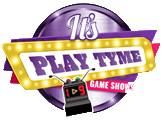Did you know that only 32% of American workers feel enthusiastic about their jobs, according to Gallup?
This staggering statistic highlights the pressing need for organizations to find ways to increase team engagement and create effective team collaboration. One powerful solution to this challenge is team building.
Team building activities have the potential to enhance team communication, boost team morale, improve team synergy, and strengthen team relationships.
In this article, we will explore the importance of team building, how it contributes to employee enthusiasm, and strategies to maximize participation rates.
Key Takeaways:
- Only 32% of American workers feel enthusiastic about their jobs
- Team building activities enhance team communication and collaboration
- Maximizing team building participation rates can boost team morale and improve team synergy
- Choosing the right team building activities is crucial for their effectiveness
- Effective team building leads to stronger team relationships and increased employee engagement
The Importance of Team Building for Employee Enthusiasm
Team building activities are more than just a fun break from daily work duties. They play a vital role in strengthening team solidarity and fostering employee enthusiasm.
By engaging in frequent team building activities, organizations can create lasting benefits that go beyond the immediate event.
Strengthen Team Solidarity Beyond Work Duties
Team building goes beyond the scope of work duties and focuses on building strong relationships among team members.
It provides an opportunity for individuals to connect, bond, and develop trust outside of their usual work interactions.
When team members feel a sense of solidarity and camaraderie, it boosts employee enthusiasm and creates an environment of collaboration and support within the organization.
Frequent Activities Create Lasting Benefits
Regularly engaging in team building activities has a lasting impact on team dynamics and employee enthusiasm.
These activities offer a chance for team members to break away from their everyday responsibilities and engage in interactive and engaging experiences.
By participating in frequent team building activities, team members develop stronger relationships, enhance their communication skills, and build a sense of belonging and purpose within the team.
As a result, employee morale and engagement are elevated, leading to increased overall productivity and job satisfaction.
| Benefits of Team Building |
|---|
| Strengthened team solidarity |
| Enhanced employee enthusiasm |
| Improved communication and collaboration |
| Increased overall productivity |
| Boosted employee morale |
| Heightened job satisfaction |
Enhancing “Employee Collaboration” Through Effective Team Building Practices
Effective team building practices play a crucial role in enhancing employee collaboration and promoting a sense of teamwork within organizations.
By implementing strategic team building activities, companies can foster effective communication and collaboration, leading to improved problem-solving abilities and increased creativity within teams.
These practices create a collaborative work environment that not only enhances outcomes but also boosts employee satisfaction.
Team building activities that emphasize effective communication facilitate the exchange of ideas and information among team members.
Encouraging open and honest communication allows employees to express their thoughts, concerns, and suggestions, leading to better collaboration and improved decision-making.
When team members are able to communicate effectively, they can work together more efficiently, coordinate tasks, and resolve conflicts more effectively, ultimately enhancing employee collaboration.
Furthermore, team building practices that focus on teamwork help foster a sense of camaraderie among employees.
By engaging in activities that require cooperation and coordination, team members learn to trust and rely on one another.
This promotes a positive team culture and strengthens relationships, allowing employees to work together harmoniously towards shared goals.
Got Team Building Games? – PRESS PLAY #funatwork
![]()
Book a live game show experience today!
Contact us for further details.
For Immediate assistance by text – 917-670-4689
No deposit required.
We plan and facilitate all activities
Effective team building practices also enhance creativity within teams. By engaging in activities that challenge employees to think outside the box and come up with innovative solutions, team members are encouraged to explore new ideas and perspectives.
This promotes a culture of creativity and innovation within the organization, leading to improved outcomes and a competitive edge.
Implementing effective team building practices is essential for organizations looking to enhance employee collaboration and create a positive work environment.
By prioritizing effective communication, promoting teamwork, and fostering creativity, companies can strengthen their teams, improve outcomes, and boost employee satisfaction.
Integrating Team Building to Foster Positive Work Cultures
Team building plays a crucial role in fostering positive work cultures by addressing issues such as combatting negative work environments and resolving conflicts.
By increasing job satisfaction through team building activities, organizations can create a work culture that promotes collaboration, productivity, and overall employee well-being.
Combat Negative Work Environments
One of the significant benefits of team building activities is their ability to combat negative work environments.
These activities promote trust, open communication, and teamwork among employees, creating a more positive and inclusive atmosphere.
By engaging in team building exercises, individuals can develop stronger relationships and break down barriers, ultimately contributing to a healthier work environment.
Conflict Resolution Through Increased Job Satisfaction
Team building activities also play a vital role in conflict resolution within the workplace.
By fostering positive relationships and encouraging effective communication, these activities can help resolve conflicts and improve job satisfaction.
When employees engage in team-building exercises together, they gain a deeper understanding of each other’s perspectives and build empathy, leading to a more harmonious work environment.
| Benefits of Integrating Team Building | Positive Work Culture | Combatting Negative Work Environments | Conflict Resolution |
|---|---|---|---|
| Promotes collaboration and teamwork | Creates a positive and inclusive atmosphere | Builds trust and open communication | Enhances job satisfaction |
| Strengthens relationships among employees | Breaks down barriers and fosters mutual understanding | Encourages empathy and respect | Improves conflict resolution skills |
| Increases overall employee well-being | Boosts morale and engagement | Reduces workplace negativity | Enhances teamwork and collaboration |
Boosting Productivity with Interactive Team Building Activities
Looking for a few team building game ideas? Interactive team building activities have the potential to significantly boost productivity within organizations.
These activities provide engaging and fun experiences that can improve team performance and enhance employee engagement.
By incorporating interactive team building activities into the work environment, organizations can create a positive and motivated workforce.
These activities encourage active participation, collaboration, and effective communication among team members.
They offer a break from routine tasks, allowing team members to refresh their minds and build stronger relationships with one another.
Whether it’s a physical challenge, a problem-solving game, or a creative endeavor, interactive team building activities create an environment where teams can thrive.
They promote teamwork, trust, and effective communication—essential elements for driving productivity and achieving success.
ffective Team Communication: The Foundation of Collaboration
Effective team communication is the cornerstone of successful collaboration within organizations.
Without clear and open lines of communication, teams can struggle to work together efficiently, leading to misunderstandings, delays, and reduced productivity.
To foster effective team communication, it is essential to draw inspiration from lessons learned in the classroom and adapt them to the workplace.
Lessons from the Classroom—Adapting to the Workplace
In the classroom, teachers emphasize the importance of active listening, respect for others’ opinions, and effective verbal and non-verbal communication.
These principles can be seamlessly integrated into the workplace to create a culture of open and transparent communication.
Encouraging active listening ensures that team members are fully engaged in the conversation and understand each other’s perspectives.
This allows for better collaboration and problem-solving, as ideas and insights are thoroughly considered and valued.
Also, fostering an environment where all team members feel comfortable expressing their opinions and ideas without fear of judgment or retribution is crucial.
This promotes trust and psychological safety, empowering individuals to contribute their unique viewpoints to the team.
Adding effective non-verbal communication, such as maintaining eye contact, nodding, and using appropriate facial expressions, can enhance understanding and convey respect and attentiveness.
These small gestures can significantly impact team dynamics and overall collaboration.
Breakdown of Barriers through Element of Fun
One effective way to break down communication barriers and encourage team members to connect on a deeper level is by incorporating an element of fun into team building activities.
Engaging in enjoyable and interactive experiences enables individuals to let their guards down, fostering a more relaxed and inclusive work environment.

Team building activities that emphasize fun and playfulness create opportunities for team members to bond and build trust.
When individuals are engaged in enjoyable activities, they are more likely to communicate openly and collaborate effectively, leading to improved team performance and a more positive work culture.
By embracing effective team communication strategies and incorporating an element of fun into team building activities, organizations can foster collaboration, strengthen relationships, and create a work environment that thrives on effective communication.
| Benefits of Effective Team Communication: | Importance of Breakdown of Barriers: |
|---|---|
| 1. Enhanced collaboration | 1. Increased trust and openness |
| 2. Improved problem-solving | 2. More inclusive work environment |
| 3. Efficient decision-making | 3. Strengthened team dynamics |
| 4. Increased productivity | 4. Enhanced employee engagement |
Calculating Team Building Participation ROI
Calculating the return on investment (ROI) for team building activities is crucial in determining their effectiveness.
Organizations need to measure the ROI of team building participation by evaluating key metrics such as employee retention rates, team performance, innovation, and customer satisfaction.
By understanding the ROI of team building activities, organizations can make informed decisions and optimize their team building strategies for maximum impact.
Let’s take a closer look at the key metrics that can be used to measure the effectiveness of team building:
- Employee Retention Rates: This metric measures the rate at which employees stay in the organization after participating in team building activities. Higher retention rates indicate greater satisfaction and engagement among team members.
- Team Performance: Measuring team performance involves assessing how well teams collaborate, meet goals, and deliver results. Improved team performance can be a direct result of effective team building activities.
- Innovation: Team building activities that encourage creativity and problem-solving can foster innovation within teams. Measuring the impact of team building on innovation can provide valuable insights into its effectiveness.
- Customer Satisfaction: Happy and engaged teams often translate into higher customer satisfaction. By assessing customer satisfaction levels before and after team building activities, organizations can gauge their impact on overall customer experience.

ladies-build-teams
Understanding the ROI of team building participation enables organizations to make data-driven decisions and continuously improve their team building initiatives.
By measuring these key metrics, organizations can gain insights into the effectiveness of their team building efforts and make adjustments to enhance employee engagement and collaboration.
Measuring Team Building Success with Key Metrics
When it comes to team building, measuring success is essential for companies looking to optimize their strategies and improve employee engagement.
To gauge the effectiveness of team building activities, organizations need to use key metrics that reflect the impact of these initiatives on various aspects of their business.
One crucial metric to consider is employee retention. High employee retention rates indicate that team building efforts are helping to create a positive work environment and foster strong relationships among team members.
By measuring employee retention over time, organizations can assess the long-term impact of team building on employee satisfaction and loyalty.
Another important metric is team performance. Effective team building should improve collaboration, communication, and overall team effectiveness.
By tracking metrics such as project outcomes, meeting objectives, and team productivity, organizations can determine whether team building activities are positively influencing team performance.
Furthermore, measuring innovation can provide insights into the creative and problem-solving abilities of teams.
Encouraging innovative thinking is a key goal of team building, and organizations can evaluate the level of innovation within teams by monitoring idea generation, implementation of new processes or strategies, and the overall culture of innovation in the workplace.
Lastly, it’s important to measure customer satisfaction as a key metric for team building success.
Satisfied customers are a reflection of effective teamwork, as they serve as evidence of successful collaboration, customer-centric decision-making, and the delivery of exceptional products or services.
Organizations can gather customer feedback through surveys, reviews, and other feedback mechanisms to gauge the impact of team building on customer satisfaction.
By measuring these key metrics, organizations gain valuable insights into the effectiveness of their team building efforts.
This data-driven approach allows them to make informed decisions, identify areas for improvement, and continually optimize their team building strategies to maximize employee engagement and drive business success.

Real-World Examples of Enhanced Team Building Participation
Real-world examples serve as valuable evidence of the positive impact that enhanced team building participation can have on employee engagement and collaboration.
These examples highlight the effectiveness of well-designed team building activities in creating a more cohesive and productive workforce.
One noteworthy case study comes from the Kenexa Research Institute, which conducted extensive research on the benefits of team building.
Their findings demonstrated that team building participation not only improves communication and problem-solving skills within teams but also enhances social interactions outside of work-related matters.
This holistic approach to team building fosters stronger relationships among team members and contributes to a positive work culture.
Another real-world example comes from Goodway Group, a company that implemented a team building activity called “Confetti.” Through their use of team building analytics,
Goodway Group was able to measure the impact of this activity on employee engagement.
The analytics revealed a significant increase in employee motivation, collaboration, and overall satisfaction, showcasing the tangible benefits of team building in driving positive outcomes.
Case Study: The Kenexa Research Institute’s Findings
The Kenexa Research Institute’s case study offers valuable insights into the positive effects of team building on employee communication, problem-solving, and social interactions.
Their research highlights the importance of team building participation in fostering stronger relationships and improving overall team dynamics.
By focusing on both work-related and non-work-related interactions, team building activities contribute to a more cohesive and engaged workforce.
Analytics: Goodway Group’s Experience with Confetti
Goodway Group’s experience with their team building activity, “Confetti,” provides analytical evidence of the effectiveness of team building in improving employee engagement and collaboration.
Through the use of team building analytics, Goodway Group measured the impact of Confetti on various key metrics, such as employee motivation and satisfaction.
The analytics revealed positive outcomes and demonstrated how well-designed team building activities can contribute to a more productive and cohesive work environment.
Statistical Insights into Team Building Participation and Effectiveness
When it comes to team building, statistics provide valuable insights into participation rates and effectiveness in enhancing employee engagement.
These statistics shed light on the positive impact that team building activities can have on various aspects of the workplace, including communication, productivity, employee satisfaction, and retention rates.
By understanding these statistics, organizations can make data-driven decisions and design effective team building strategies that align with their goals and objectives.
Let’s explore some key statistics that highlight the importance and benefits of team building:
| Statistic | Impact |
|---|---|
| Participation Rates | High participation rates indicate strong employee engagement and willingness to collaborate. Team building activities can help boost participation and create a more connected and motivated workforce. |
| Team Building Effectiveness | Effective team building practices contribute to enhanced employee collaboration, effective communication, and problem-solving abilities. This leads to improved teamwork, creativity, and overall job satisfaction. |
| Employee Engagement | Engaged employees are more likely to be productive, committed, and loyal to their organizations. Team building activities foster employee engagement by creating a positive work culture and building strong relationships among team members. |
These statistics highlight the importance of team building in promoting collaboration, communication, and employee engagement.
By incorporating effective team building activities into the workplace, organizations can reap the benefits of a more cohesive and productive team.
Choosing the Right Team Building Activities to Maximize Participation
Are you looking for a few team building game ideas to maximize participation and create a more engaged and collaborative workforce?
Choosing the right activities is crucial in achieving desired outcomes and promoting effective communication within your team.
First and foremost, consider the specific needs and challenges of your team. Are they in need of icebreakers to break down barriers and foster connections?
Or do they require problem-solving activities to enhance collaboration and teamwork? Tailoring the activities to your team’s requirements will ensure maximum participation and engagement.
Additionally, consider the size of your group and the goals of your organization. For smaller teams, interactive and hands-on activities such as escape rooms or outdoor challenges can promote a sense of camaraderie and foster teamwork.
On the other hand, larger teams may benefit from group-based activities like scavenger hunts or team-building workshops.
Lastly, align your team building activities with your company’s culture and objectives. Choose activities that reflect your organization’s values, mission, and vision.
This will not only create a more meaningful experience for your team but also reinforce the desired behaviors and attitudes that support your company’s goals.
FAQ

frequently asked questions
What is the importance of team building for employee enthusiasm?
Team building goes beyond work duties by focusing on strengthening relationships and building solidarity among team members.
Regular team building activities create opportunities for team members to connect, bond, and develop trust.
The benefits of team building extend beyond the immediate activity, creating lasting positive effects on team dynamics and employee enthusiasm.
How does team building enhance employee collaboration?
Effective team building practices can enhance employee collaboration and promote a sense of teamwork.
Team building activities that encourage effective communication and collaboration can improve problem-solving abilities and foster creativity within teams.
By implementing effective team building practices, organizations can create a collaborative work environment that leads to improved outcomes and employee satisfaction.
How does team building contribute to fostering positive work cultures?
Team building plays a crucial role in fostering positive work cultures by addressing issues such as negative work environments and conflict resolution.
Team building activities can help combat negative work environments by promoting trust, open communication, and teamwork.
By increasing job satisfaction through team building activities, organizations can address conflicts and create a positive work culture that promotes collaboration and productivity.
How do interactive team building activities boost productivity?
Interactive team building activities have the potential to boost productivity within organizations.
These activities provide engaging and fun experiences that can improve team performance and enhance employee engagement.
By incorporating interactive team building activities into the work environment, organizations can create a positive and motivated workforce.
Why is effective team communication essential for successful collaboration?
Effective team communication is essential for successful collaboration.
Lessons from the classroom can be adapted to the workplace to encourage effective communication and collaboration among team members.
Incorporating an element of fun into team building activities can help break down barriers and create a more open and inclusive work environment.
How can organizations calculate the return on investment (ROI) for team building activities?
Calculating the return on investment (ROI) for team building activities is essential to determine their effectiveness.
Organizations can measure the ROI of team building participation by evaluating key metrics such as employee retention rates, team performance, innovation, and customer satisfaction.
Understanding the ROI of team building activities can help organizations make informed decisions and optimize their team building strategies.
How can organizations measure team building success with key metrics?
Measuring team building success requires the use of key metrics that reflect the impact of team building activities.
Key metrics may include employee retention rates, team performance indicators, levels of innovation, and customer satisfaction.
By measuring these metrics, organizations can assess the effectiveness of their team building efforts and make data-driven decisions.
Can you provide real-world examples of enhanced team building participation?
Real-world examples highlight the impact of enhanced team building participation on employee engagement and collaboration.
Case studies, such as the Kenexa Research Institute’s findings, provide insights into the positive effects of team building on communication and social interactions outside of work-related matters.
Analytics from companies like Goodway Group showcase the benefits of team building activities in improving employee engagement.
What statistical insights are available on team building participation and effectiveness?
Team building statistics show the positive impact of team building activities on communication, productivity, employee satisfaction, and retention rates. B
y understanding these statistics, organizations can make data-driven decisions and design effective team building strategies.
How can organizations choose the right team building activities to maximize participation?
Choosing the right team building activities is crucial to maximize participation and achieve desired outcomes.
Consideration should be given to the specific needs and challenges of the team, the size of the group, and the goals of the organization.
Effective team building activities should promote employee engagement, collaboration, and effective communication while aligning with the company’s culture and objectives.





